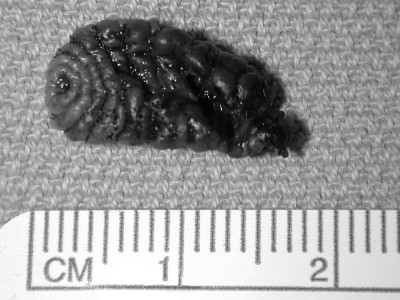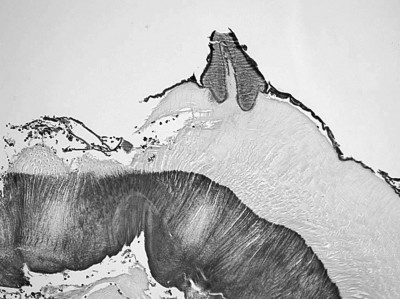Bot flies are parasitic insects that can infest mammals, including humans. Understanding the causes and prevention methods is crucial. Let’s explore this topic further on flyermedia.net.
1. What Are Bot Flies?
Bot flies, also known as warble flies, are a family of flies whose larvae are internal parasites of mammals. These flies are found worldwide but are most common in tropical and subtropical regions. The adult flies are typically large and hairy, resembling bees, but it’s their larvae that cause the real problems.
1.1. How Do Bot Flies Differ From Other Flies?
Unlike common house flies that feed on decaying matter, adult bot flies do not feed at all. They rely entirely on the energy reserves they accumulated during their larval stage. Their sole purpose is to reproduce. The larvae, on the other hand, are obligate parasites, meaning they require a host to survive and develop. According to research from the University of Florida, bot fly larvae are highly specialized to live within the tissues of their host.
1.2. What Species of Bot Flies Affect Humans?
The primary species of bot fly that affects humans is Dermatobia hominis, also known as the human bot fly. This species is native to Central and South America. Other species may occasionally infest humans, but D. hominis is the most common culprit. The bot fly life cycle is fascinating yet unsettling, as detailed by the Centers for Disease Control and Prevention (CDC).
2. What Causes Bot Fly Infestation in Humans?
Bot fly infestation, or myiasis, occurs when bot fly larvae enter the skin and develop within the host’s tissues. This process is initiated through a unique and somewhat disturbing method.
2.1. The Bot Fly Life Cycle: An Overview
The life cycle of the bot fly is crucial to understanding how infestations occur:
- Egg Laying: Female bot flies don’t directly lay eggs on a host. Instead, they capture other insects, such as mosquitoes or ticks, and glue their eggs to them. This is a process called phoresy.
- Larval Transfer: When the carrier insect lands on a warm-blooded host, the body heat triggers the bot fly eggs to hatch.
- Skin Penetration: The larvae, now hatched, quickly burrow into the skin through the bite wound or hair follicles.
- Development: Once inside the skin, the larvae feed on tissue and develop, creating a painful, boil-like lesion.
- Maturation and Exit: After several weeks, the mature larva emerges from the skin to pupate in the soil, eventually becoming an adult fly.
2.2. Role of Carrier Insects in Bot Fly Transmission
The use of carrier insects is a key factor in bot fly transmission. Mosquitoes, ticks, and other biting insects act as vectors, carrying the bot fly eggs to potential hosts. This indirect method of transmission increases the chances of the bot fly larvae finding a suitable host. According to the Entomological Society of America, this strategy allows bot flies to target a wider range of hosts without directly confronting them.
2.3. Geographical Distribution and Risk Factors
Human bot fly infestations are most common in Central and South America due to the fly’s native habitat. Travelers to these regions are at the highest risk. Risk factors include:
- Travel to Endemic Areas: Spending time in regions where bot flies are prevalent.
- Outdoor Activities: Engaging in activities that increase exposure to biting insects.
- Lack of Protective Measures: Not using insect repellent or wearing protective clothing.
- Rural Environments: Staying in rural areas where bot flies and their carrier insects are more common.
 Bot fly larvae burrow into the skin
Bot fly larvae burrow into the skin
3. What Are the Symptoms of Bot Fly Infestation?
Recognizing the symptoms of bot fly infestation is essential for prompt diagnosis and treatment.
3.1. Initial Signs of Infestation
The initial sign of bot fly infestation is typically a small, red bump resembling an insect bite. This bump gradually enlarges and becomes more painful over time.
3.2. Development of a Boil-Like Lesion
As the larva develops, a boil-like lesion forms around the entry site. This lesion is characterized by:
- Pain: Often described as intense and throbbing.
- Swelling: The surrounding tissue becomes inflamed and swollen.
- Discharge: A small opening (punctum) may appear, draining fluid.
- Movement: Some individuals report feeling movement within the lesion.
3.3. Identifying the Punctum and Larval Breathing Hole
A key characteristic of a bot fly lesion is the presence of a small opening, or punctum, through which the larva breathes. This opening may be visible as a tiny hole in the center of the lesion. Observing this punctum is a crucial step in diagnosing bot fly infestation.
3.4. Potential Complications if Untreated
If left untreated, bot fly infestation can lead to several complications:
- Secondary Infections: Bacteria can enter the lesion, causing a secondary infection.
- Pain and Discomfort: The pain can become severe, interfering with daily activities.
- Tissue Damage: In rare cases, the larva can cause significant tissue damage.
- Psychological Distress: The experience of having a larva embedded in the skin can be distressing.
4. How Is Bot Fly Infestation Diagnosed?
Diagnosing bot fly infestation typically involves a combination of clinical examination and patient history.
4.1. Clinical Examination and Patient History
A physician will examine the lesion and ask about recent travel history, particularly to endemic areas. The characteristic appearance of the lesion, along with a history of travel to Central or South America, is highly suggestive of bot fly infestation.
4.2. Microscopic Identification of Larval Elements
In some cases, a sample of tissue may be taken from the lesion and examined under a microscope to confirm the presence of larval elements. This microscopic examination can help identify the specific type of bot fly larva involved. According to a study published in the Journal of Clinical Microbiology, microscopic identification is a reliable method for confirming bot fly infestation.
4.3. Ruling Out Other Conditions With Similar Symptoms
It’s important to rule out other conditions that can mimic bot fly infestation, such as:
- Bacterial Infections: Like cellulitis or boils.
- Fungal Infections: Certain fungal infections can cause skin lesions.
- Foreign Body Reactions: Reactions to splinters or other foreign objects.
- Cysts: Sebaceous cysts can sometimes resemble bot fly lesions.
5. What Are the Treatment Options for Bot Fly Infestation?
The primary goal of treatment is to remove the larva from the skin. Several methods can be used, depending on the stage of development and the location of the lesion.
5.1. Surgical Removal of the Larva
Surgical removal is the most common and effective treatment for bot fly infestation. A physician will make a small incision around the lesion and carefully extract the larva using forceps. This method ensures complete removal and reduces the risk of complications.
5.2. Non-Surgical Methods: Suffocation Techniques
Non-surgical methods aim to suffocate the larva, encouraging it to emerge from the skin. These techniques involve applying a thick substance over the punctum to block the larva’s breathing hole. Common substances include:
- Petroleum Jelly: A thick, occlusive ointment.
- Beeswax: A natural wax that can effectively block the breathing hole.
- Tape: Adhesive tape can be used to cover the punctum.
5.3. Medications and Antibiotics: When Are They Necessary?
While antibiotics are not effective against the bot fly larva itself, they may be necessary if a secondary bacterial infection develops. In such cases, a physician may prescribe oral or topical antibiotics to treat the infection. According to the Infectious Diseases Society of America, prompt treatment of secondary infections can prevent serious complications.
5.4. Home Remedies: What Works and What Doesn’t?
Some home remedies have been suggested for treating bot fly infestation, but their effectiveness is not always guaranteed. It’s crucial to consult with a healthcare professional before trying any home remedies.
| Home Remedy | Effectiveness |
|---|---|
| Raw Meat Application | Some believe that applying raw meat to the site can create an oxygen deficiency, encouraging the larva to migrate into the meat. However, this method is not consistently effective. |
| Warm Compresses | Warm compresses may help reduce inflammation and discomfort, but they will not remove the larva. |
| Essential Oils | Certain essential oils, such as tea tree oil, have antimicrobial properties and may help prevent secondary infections. However, they will not kill the larva. |
6. How Can You Prevent Bot Fly Infestation?
Preventing bot fly infestation is the best approach, especially for travelers to endemic areas.
6.1. Protective Clothing and Insect Repellent
Wearing protective clothing and using insect repellent are essential measures for preventing bot fly infestation. Cover as much skin as possible with long sleeves, pants, and hats. Apply insect repellent containing DEET or picaridin to exposed skin.
6.2. Avoiding High-Risk Areas and Peak Activity Times
Avoid spending time in areas known to have high bot fly activity, especially during peak activity times. These flies are most active during the warmer months and in rural, forested areas.
6.3. Mosquito Nets and Bed Nets for Sleeping
When sleeping in areas where bot flies are common, use mosquito nets or bed nets to prevent biting insects from landing on your skin. Ensure that the nets are in good condition and properly sealed.
6.4. Inspecting and Treating Clothing
Bot flies can lay eggs on clothing, so it’s important to inspect and treat clothing regularly. Wash clothing in hot water and dry it in a hot dryer to kill any eggs or larvae. You can also use permethrin-treated clothing for added protection. The World Health Organization recommends permethrin-treated clothing for individuals at high risk of insect bites.
7. Bot Flies and Animals: What You Need to Know
While this article focuses on human bot fly infestation, it’s important to understand the impact of bot flies on animals, particularly livestock and pets.
7.1. Common Animal Hosts for Bot Flies
Bot flies commonly infest various animals, including:
- Cattle: Bot flies can cause significant economic losses in the cattle industry.
- Horses: Equine bot flies can lead to discomfort and health issues in horses.
- Sheep: Sheep bot flies can affect the health and productivity of sheep flocks.
- Dogs and Cats: While less common, bot flies can infest pets like dogs and cats.
7.2. Symptoms and Treatment in Animals
Symptoms of bot fly infestation in animals are similar to those in humans, including boil-like lesions and discomfort. Treatment typically involves manual removal of the larvae and supportive care.
7.3. Preventive Measures for Protecting Animals
Preventive measures for protecting animals from bot flies include:
- Insect Control: Implementing insect control measures on farms and in pastures.
- Regular Inspections: Regularly inspecting animals for signs of infestation.
- Veterinary Care: Seeking prompt veterinary care if infestation is suspected.
8. Interesting Facts About Bot Flies
Here are some fascinating facts about bot flies that highlight their unique biology and behavior:
8.1. The Unique Method of Egg Transfer
The bot fly’s method of using carrier insects to transfer eggs is a remarkable adaptation. This strategy allows the bot fly to target a wide range of hosts without directly interacting with them.
8.2. Larval Adaptations for Survival Within the Host
Bot fly larvae have several adaptations that allow them to survive within the host’s tissues. These include:
- Spines: Concentric rows of small black spicules that help anchor them in place.
- Breathing Hole: A punctum through which they breathe.
- Bacteriostatic Agents: Substances produced in their gut that prevent secondary infections.
8.3. The Role of Bot Flies in Ecosystems
While bot flies are parasites, they also play a role in ecosystems. Their presence can affect the health and behavior of their hosts, influencing population dynamics and ecological interactions. According to a study in Parasitology, bot flies can serve as indicators of environmental health.
9. Recent Research and Developments in Bot Fly Studies
Ongoing research continues to shed light on the biology, behavior, and treatment of bot fly infestations.
9.1. New Insights Into Bot Fly Behavior and Biology
Recent studies have provided new insights into bot fly behavior and biology, including:
- Genetic Studies: Genetic studies have revealed the evolutionary relationships between different bot fly species.
- Behavioral Studies: Behavioral studies have explored the factors that influence bot fly host selection.
- Immunological Studies: Immunological studies have examined the host’s immune response to bot fly infestation.
9.2. Advances in Treatment and Prevention Strategies
Advances in treatment and prevention strategies include:
- Novel Insect Repellents: Development of new insect repellents that are more effective against carrier insects.
- Vaccine Development: Research into vaccines that can protect animals from bot fly infestation.
- Improved Surgical Techniques: Refinement of surgical techniques for removing bot fly larvae.
9.3. The Impact of Climate Change on Bot Fly Distribution
Climate change is expected to influence the distribution of bot flies, potentially expanding their range into new areas. This could lead to an increased risk of bot fly infestation in regions where they are not currently prevalent. The Intergovernmental Panel on Climate Change (IPCC) reports that changes in temperature and precipitation patterns can alter the distribution of insects and other disease vectors.
10. FAQ About Bot Flies
Here are some frequently asked questions about bot flies:
10.1. Are Bot Flies Dangerous to Humans?
While bot fly infestations are typically not life-threatening, they can be painful and uncomfortable. Complications such as secondary infections can occur if left untreated.
10.2. Can Bot Flies Lay Eggs Directly on Humans?
No, bot flies do not lay eggs directly on humans. They use carrier insects, such as mosquitoes and ticks, to transfer their eggs to a host.
10.3. How Long Does It Take for a Bot Fly Larva to Mature?
It takes approximately six to twelve weeks for a bot fly larva to mature within the host’s skin.
10.4. Can You Feel the Larva Moving Inside Your Skin?
Yes, some individuals report feeling movement within the lesion as the larva develops.
10.5. Is It Possible to Remove a Bot Fly Larva at Home?
While non-surgical methods can be attempted at home, it’s best to seek professional medical care for bot fly infestation to ensure complete removal and prevent complications.
10.6. What Should You Do If You Suspect a Bot Fly Infestation?
If you suspect a bot fly infestation, consult with a healthcare professional as soon as possible for diagnosis and treatment.
10.7. Are Bot Flies Common in the United States?
Bot flies are not common in the United States, but cases can occur in travelers who have visited endemic areas in Central and South America.
10.8. Can Bot Flies Infest Pets?
Yes, bot flies can infest pets like dogs and cats, although it is less common than in livestock.
10.9. What Is the Best Way to Prevent Bot Fly Infestation While Traveling?
The best ways to prevent bot fly infestation while traveling include wearing protective clothing, using insect repellent, and avoiding high-risk areas during peak activity times.
10.10. How Do Doctors Typically Remove Bot Flies?
Doctors typically remove bot flies through surgical excision, where a small incision is made to extract the larva. Non-surgical methods like suffocation techniques can also be used.
Understanding What Causes Bot Flies and how to prevent them is essential for anyone living in or traveling to endemic areas. By taking preventive measures and seeking prompt medical care if infestation occurs, you can minimize the risk and impact of these parasitic insects. Remember to visit flyermedia.net for more information on travel safety and health.
 Hematoxylin and eosin-stained photomicrograph section revealing the presence of a chitinous spine on the surface of the botfly larva
Hematoxylin and eosin-stained photomicrograph section revealing the presence of a chitinous spine on the surface of the botfly larva
Are you fascinated by the world of aviation? Do you dream of becoming a pilot or exploring the latest advancements in aviation technology? At flyermedia.net, we provide a wealth of information on flight training, aviation news, and career opportunities in the USA. Whether you’re looking for a flight school in Daytona Beach or want to stay updated on aviation regulations, we’ve got you covered. Contact us today at Address: 600 S Clyde Morris Blvd, Daytona Beach, FL 32114, United States, Phone: +1 (386) 226-6000, or visit our website at flyermedia.net to learn more and start your aviation journey now.
